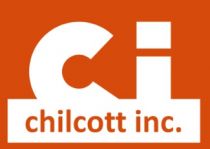The US Renal Anemia Market Sees Some Shifting As Mircera Use Expands Beyond Fresenius Medical Care Clinics and Auryxia Makes its Debut with a New Iron Deficiency Anemia Indication in the Pre-Dialysis Setting
The US Renal Anemia Market Sees Some Shifting As Mircera Use Expands Beyond Fresenius Medical Care Clinics and Auryxia Makes its Debut with a New Iron Deficiency Anemia Indication in the Pre-Dialysis Setting
According to a recent report published by Spherix Global Insights, about one-third of the surveyed nephrologists (n=202) report the unmet need for new treatments for renal anemia is high. However, other many areas within nephrology, such as diabetic nephropathy and acute kidney injury, are considered a higher priority for new therapeutic options.
EXTON, Pa., May 8, 2018 /PRNewswire/ -- For the past several years, the renal anemia market has been rather sedate, with limited shifting in treatment rates or market share for erythropoietin stimulating agents (ESAs) and IV iron. Changes are percolating, however, in both the dialysis and non-dialysis settings.
In the dialysis setting, brand share for ESAs is largely aligned with unit ownership - Amgen's Epogen is dominant in DaVita units, Roche/Vifor Pharma's Mircera leads in FMC units, and Amgen's Aranesp is the market leader in independent and small-to-medium sized dialysis chains. In Q1 2018, a higher percentage of nephrologists in independent units and smaller dialysis chains reported use of Roche's Mircera, the first inkling of an expansion beyond the original agreement with Fresenius Medical Care which was established in May 2015. Indeed, more than one-third of the nephrologists reported an increase in their use of Mircera in the dialysis setting in the past three months. In contrast, 20% report decreased use of Epogen and 14% report decreased use of Aranesp, indicating pressure on Amgen's ESA franchise.
In the pre-dialysis setting, Keryx is shaking things up with the expanded indication for Auryxia to treat iron deficiency anemia in the non-dialysis population. Compared to traditional oral iron such as ferrous sulfate, Auryxia is more favorably perceived on nearly all efficacy, safety, and tolerability attributes, and only comes up short in terms of cost, market access, and logistics of acquiring the product. When compared to Venofer, the leading IV iron brand, Auryxia lags on efficacy parameters, but scores high on safety, tolerability, and patient convenience. What is truly noteworthy, however, is the level of promotion Keryx is placing behind Auryxia compared to other renal anemia drugs. Nearly 40% of the respondents saw the Auryxia representative in the past month, far exceeding contact rates of Daiichi Sankyo/Vifor Pharma's Injectafer (13%) and Venofer (1%). This promotion seems to be working - the majority have already trialed Auryxia for the new indication, and about three-quarters expect to be using the drug to treat IDA in non-dialysis patients in the next six months. Auryxia is also growing in its flagship indication (hyperphosphatemia in dialysis patients), where in Q1, self-reported patient share exceeded 10% for the first time with significant share gains expected to continue next quarter.
On the horizon, biosimilar ESAs are a continuing possibility, though the most advanced product from Pfizer (Retacrit, epoetin alfa) has not made headway since receiving a second Complete Response Letter from the FDA last June. Feedback from this survey shows a general acceptance toward biosimilar ESAs, however, concern levels have been growing over time as approvals fail to materialize.
There are high expectations for the novel class of oral anemia agents known as the HIF-PH inhibitors (hypoxia-inducible factor prolyl hydroxylase enzyme inhibitors, "HIFs"), including AstraZeneca/Astellas/Fibrogen's roxadustat, Akebia/Otsuka's vadadustat, and GSK's daprodustat. 40% of the respondents are expecting the HIFs to come in with a better safety profile compared to ESAs, and agreement has been growing over time as it relates to HIFs offering a more physiologic approach to treating anemia. Those most familiar with these agents are somewhat concerned with the potential for off-target effects and "just the fact that they are new" is a concern for some. Those with the greatest HIF familiarity estimate that more than 40% of the non-dialysis patients recently started on ESAs would have been started on a HIF instead if the products were FDA approved and available. While highlighting the benefits of this novel, oral class against ESAs is likely to resonate with nephrologists, differentiating the HIFs from one another may be the biggest challenge faced by manufacturers. This being the case, securing dialysis contracts (as Akebia did early on), being first to market, and achieving a competitive market access position will be critical success factors for one of these compounds to emerge as the market leader. The opportunity is massive, particularly if HIF manufacturers are able to expand treatment rates and duration of therapy in non-dialysis patients, and, longer term, strategically tap into the primary care setting where many patients with anemia have yet to be referred to a nephrologist.
RealTime Dynamix(TM): Renal Anemia is an independent report series published on a quarterly basis. The series provides a close-quarters analysis of key performance metrics, focusing on brand gains and losses, industry contact rates, familiarity and adoption rates of recently launched products and awareness of products in development. The next wave of RealTime Dynamix: Renal Anemia will be published in June.
About Spherix Global Insights
Spherix Global Insights is an independent market intelligence agency, specializing in renal, autoimmune, neurologic and rare disease markets. Our aim is to apply our commercial experience and unique relationships within core specialty markets to translate data into insight, enabling our clients to make smarter business decisions.
All company, brand or product names in this document are trademarks of their respective holders.
For more information contact:
Robbie McCarthy, Chief Strategy Officer
Email: info@spherixglobalinsights.com
www.spherixglobalinsights.com
View original content with multimedia:http://www.prnewswire.com/news-releases/the-us-renal-anemia-market-sees-some-shifting-as-mircera-use-expands-beyond-fresenius-medical-care-clinics-and-auryxia-makes-its-debut-with-a-new-iron-deficiency-anemia-indication-in-the-pre-dialysis-setting-300644443.html
SOURCE Spherix Global Insights



